Position Fingerprint-Based Beam Selection in Millimeter Wave Heterogeneous Networks
Abstract
:1. Introduction
2. Related Work
3. System Model
3.1. Millimeter Wave Heterogeneous Networks Model
3.2. Millimeter Wave Channel model
4. PFP-Based mmWave Multi-Cell Beam Selection Scheme
4.1. The Offline FPDB Construction
4.2. The Online PFP Matching
5. Simulation Analysis
5.1. Contrastive Scheme Description
- Scheme 1: Fully digital BF systemEach antenna corresponds to a RF chain, all beams are used to send data, and it does not involve the beam selection algorithm.
- Scheme 2: MM-S schemeExploiting the sparsity of the mmWave channel matrix, the channel with the largest energy is selected, and an optimum transmission beam is determined for each UE.
- Scheme 3: TOA PFP-based noncooperation beam selection schemeThe UE’s current TOA PFP is matched with the PFP in the FPDB to conduct the beam selection process and the FPDB includes only the UE’s PFP and the corresponding best beam ID. As a result, it is mainly applied to a single cell. When it is used in a multi-cell scenario, inter-cell beam interference is not taken into account.
- Scheme 4: TOA PFP-based multi-cell cooperation beam selection schemeUE’s current TOA PFP is matched with the PFP in the FPDB to conduct the beam selection process. In the matching process, the optimal beam and the strongest interference beams of the UE are obtained and the orthogonal codes are allocated to them before transmission, so as to eliminate the inter-cell beam interference.
5.2. Simulation Parameters
5.3. Simulation Results Analysis
6. Conclusions
Acknowledgments
Author Contributions
Conflicts of Interest
References
- Andrews, J.G.; Buzzi, S.; Choi, W.; Hanly, S.; Lozano, A.; Soong, A.; Zhang, J.C. What will 5G be? IEEE J. Sel. Areas Commun. 2014, 32, 1065–1082. [Google Scholar] [CrossRef]
- Rappaport, T.S.; Sun, S.; Mayzus, R.; Zhao, H.; Azar, Y.; Wang, K.; Wong, G.N.; Schulz, J.K.; Samimi, M.; Gutierrez, F. Millimeter wave mobile communications for 5G cellular: It will work! IEEE Access. 2013, 1, 335–349. [Google Scholar] [CrossRef]
- Rangan, S.; Rappaport, T.S.; Erkip, E. Millimeter-wave cellular wireless networks: Potentials and challenges. Proc. IEEE. 2014, 102, 366–385. [Google Scholar] [CrossRef]
- Pi, Z.; Choi, J.; Heath, R.W. Millimeter-wave Gbps broadband evolution towards 5G: Fixed access and backhaul. IEEE Commun. Mag. 2016, 54, 138–144. [Google Scholar] [CrossRef]
- Swindlehurst, A.L.; Ayanoglu, E.; Heydari, P.; Capolino, F. Millimeter-wave massive MIMO: The next wireless revolution? IEEE Commun. Mag. 2014, 52, 56–62. [Google Scholar] [CrossRef]
- Ngo, H.Q.; Larsson, E.G.; Marzetta, T.L. Energy and spectral efficiency of very large multiuser MIMO systems. IEEE Trans. Commun. 2013, 61, 1436–1449. [Google Scholar]
- Han, S.; Chih-Lin, I.; Xu, Z.; Rowell, C. Large-scale antenna systems with hybrid analog and digital beamforming for millimeter wave 5G. IEEE Commun. Mag. 2015, 53, 186–194. [Google Scholar] [CrossRef]
- Roh, W.; Seol, J.Y.; Park, J.; Lee, B.; Lee, J.; Kim, Y.; Cho, J.; Cheun, K.; Aryanfar, F. Millimeter-wave beamforming as an enabling technology for 5g cellular communications: theoretical feasibility and prototype results. IEEE Commun. Mag. 2014, 52, 106–113. [Google Scholar] [CrossRef]
- Pi, Z.; Khan, F. An introduction to millimeter-wave mobile broadband systems. IEEE Commun. Mag. 2011, 49, 101–107. [Google Scholar] [CrossRef]
- Alkhateeb, A.; Leus, G.; Heath, R.W. Limited feedback hybrid precoding for multi-user millimeter wave systems. IEEE Trans. Wirel. Commun. 2015, 14, 6481–6494. [Google Scholar] [CrossRef]
- Alkhateeb, A.; Ayach, E.O.; Leus, G.; Heath, R.W. Channel estimation and hybrid precoding for millimeter wave cellular systems. IEEE J. Sel. Top. Signal Process. 2014, 8, 831–846. [Google Scholar] [CrossRef]
- Alexandropoulos, G.C.; Chouvardas, S. Low complexity channel estimation for millimeter wave systems with hybrid A/D antenna processing. In Proceedings of the IEEE Global Communications Conference Workshops (GC Wkshps), Washington, DC, USA, 4–8 December 2016; pp. 1–6. [Google Scholar]
- Alexandropoulos, G.C. Position aided beam alignment for millimeter wave backhaul systems with large phased arrays. arXiv, 2017. Available online: https://arxiv.org/abs/1701.03291(accessed on 31 August 2017)arXiv:1701.03291.
- Gonzalez-Prelcic, N.; Mendez-Rial, R.; Heath, R.W. Radar aided mmWave beam alignment in V2I communications supporting antenna diversity. In Proceedings of the Information Theory and Applications Workshop (ITA), La Jolla, CA, USA, 31 January–5 February 2016; pp. 1–7. [Google Scholar]
- Hosoya, K.; Prasad, N.; Ramachandran, K.; Orihashi, N.; Kishimoto, S.; Rangarajan, S.; Maruhashi, K. Multiple sector ID capture (MIDC): A novel beamforming technique for 60-GHz band multi-Gbps WLAN/PAN systems. IEEE Trans. Antennas Propag. 2015, 63, 81–96. [Google Scholar] [CrossRef]
- Wang, J. Beam codebook based beamforming protocol for multi-Gbps millimeter-wave WPAN systems. IEEE J. Sel. Areas Commun. 2009, 27, 1390–1399. [Google Scholar] [CrossRef]
- Lee, G.; Sung, Y.; Seo, J. Randomly-directional beamforming in millimeter-wave multiuser MISO downlink. IEEE Trans. Wirel. Commun. 2016, 15, 1086–1100. [Google Scholar] [CrossRef]
- Lee, G.; Sung, Y.; Kountouris, M. On the performance of random beamforming in sparse millimeter wave Channels. IEEE J. Sel. Top. Signal Process. 2016, 10, 560–575. [Google Scholar] [CrossRef]
- Sayeed, A.; Brady, J. Beamspace MIMO for high-dimensional multiuser communication at millimeter-wave frequencies. In Proceedings of the IEEE Global Communications Conference (GLOBECOM), Atlanta, GA, USA, 9–13 December 2013; pp. 3679–3684. [Google Scholar]
- Amadori, P.V.; Masouros, C. Low RF-complexity millimeter-wave beamspace-MIMO systems by beam selection. IEEE Trans. Commun. 2015, 63, 2212–2223. [Google Scholar] [CrossRef]
- Han, Y.; Zhang, H.; Jin, S.; Li, X.; Yu, R.; Zhang, Y. Investigation of transmission schemes for millimeter-wave massive MU-MIMO systems. IEEE Syst. J. 2015, 1–12. [Google Scholar] [CrossRef]
- Salameh, H.B.; Hailat, T.F. Efficient beamforming in multi-cell multi-antenna networks: Exploiting network duality. In Proceedings of the IEEE Wireless Communications and Networking Conference (WCNC), Doha, Qatar, 3–6 April 2016; pp. 1–6. [Google Scholar]
- Bogale, T.E.; Le, L.B. Massive MIMO and mmWave for 5G wireless hetNet: Potential benefits and challenges. IEEE Veh. Technol. Mag. 2016, 11, 64–75. [Google Scholar] [CrossRef]
- Sohrabi, F.; Yu, W. Hybrid digital and analog beamforming design for large-scale antenna arrays. IEEE J. Sel. Top. Signal Process. 2016, 10, 501–513. [Google Scholar] [CrossRef]
- Zeng, Y.; Zhang, R. Millimeter wave MIMO with lens antenna array: A new path division multiplexing paradigm. IEEE Trans. Commun. 2016, 64, 1557–1571. [Google Scholar] [CrossRef]
- Guvenc, I.; Chong, C. A survey on TOA based wireless localization and NLOS mitigation techniques. IEEE Commun. Surv. Tutor. 2009, 11, 107–124. [Google Scholar] [CrossRef]
- Ning, C.; Li, R.; Li, K. Outdoor location estimation using received signal strength-based fingerprinting. Wirel. Pers. Commun. 2016, 89, 365–384. [Google Scholar] [CrossRef]
- Xue, Q.; Fang, X.; Xiao, M.; Yan, L. Multi-user millimeter wave communications with nonorthogonal beams. IEEE Trans. Veh. Technol. 2016, 66, 5675–5688. [Google Scholar] [CrossRef]
- Wang, S.; Wang, C. Joint optimization of spectrum and energy efficiency in cognitive radio networks. Digit. Commun. and Net. 2015, 1, 161–170. [Google Scholar] [CrossRef]
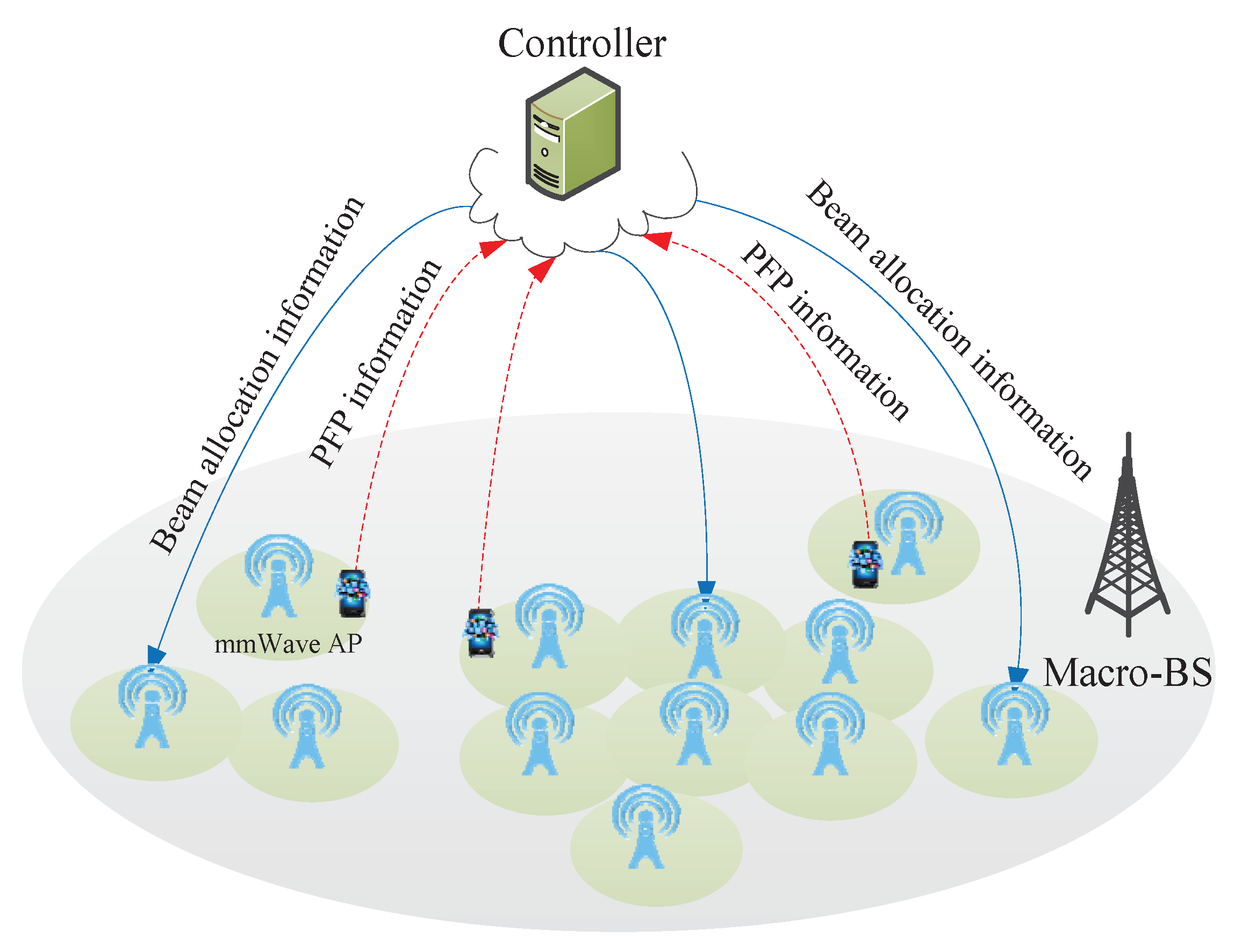
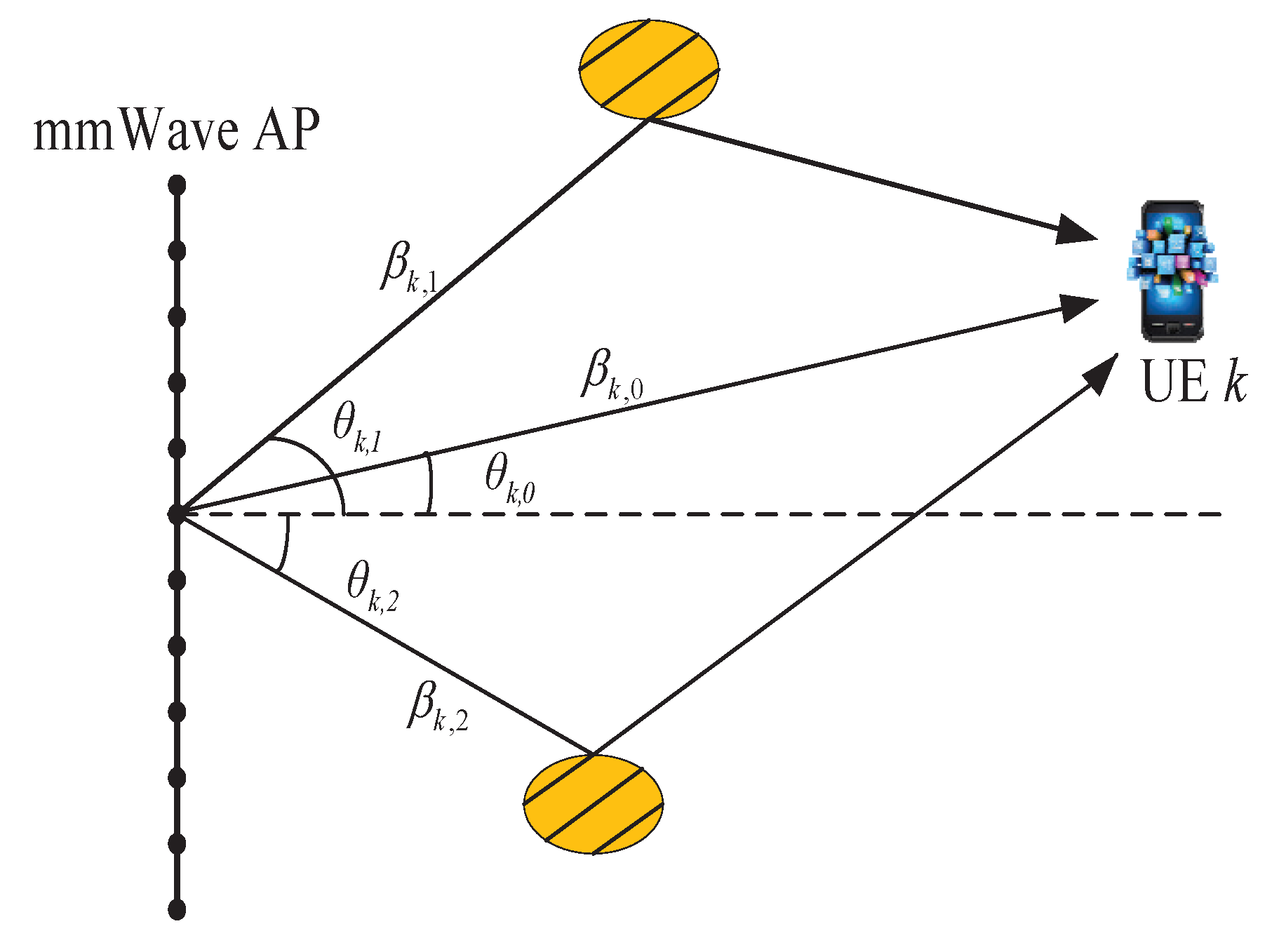
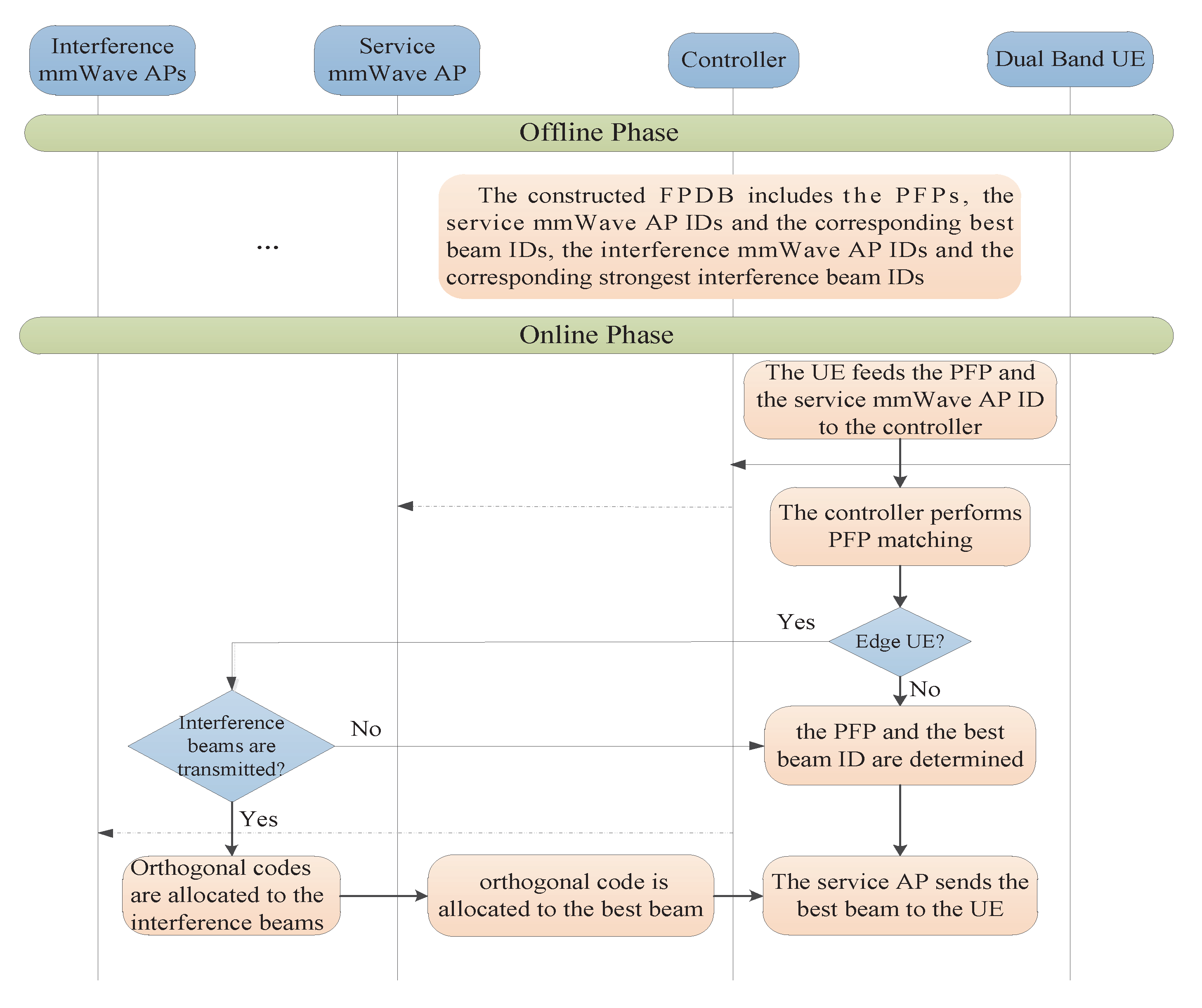
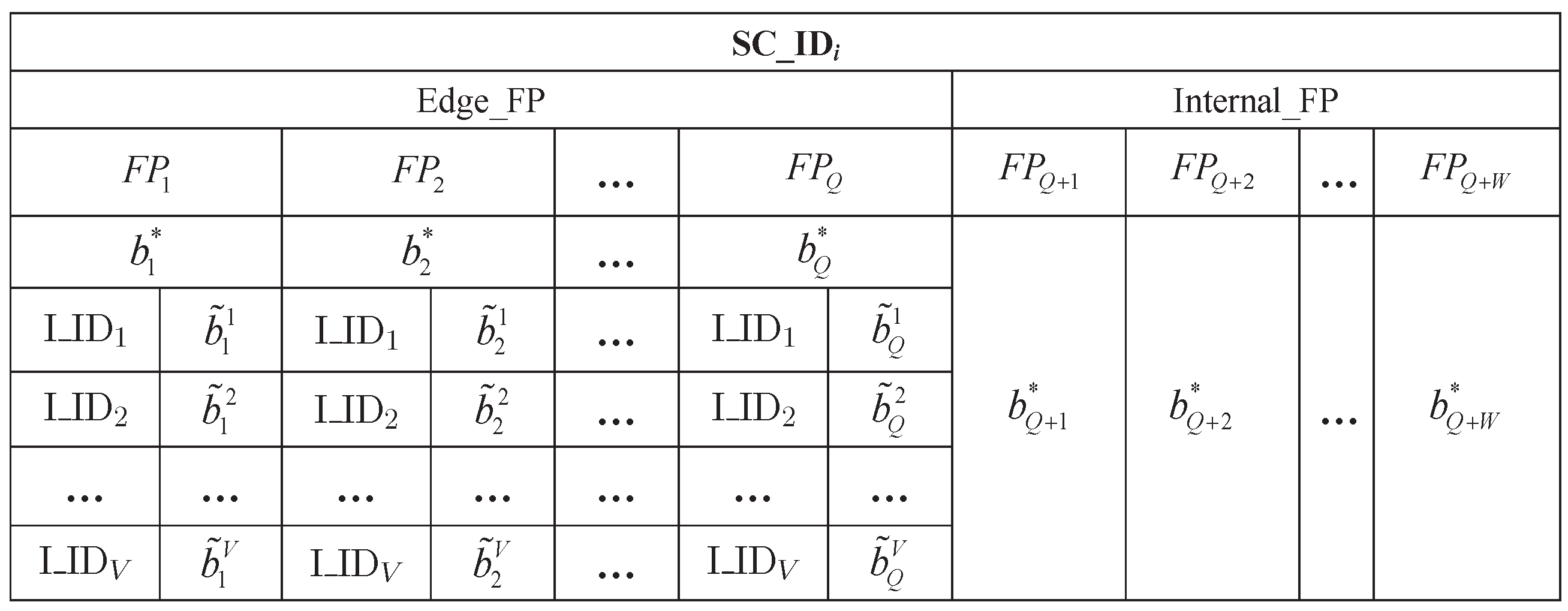
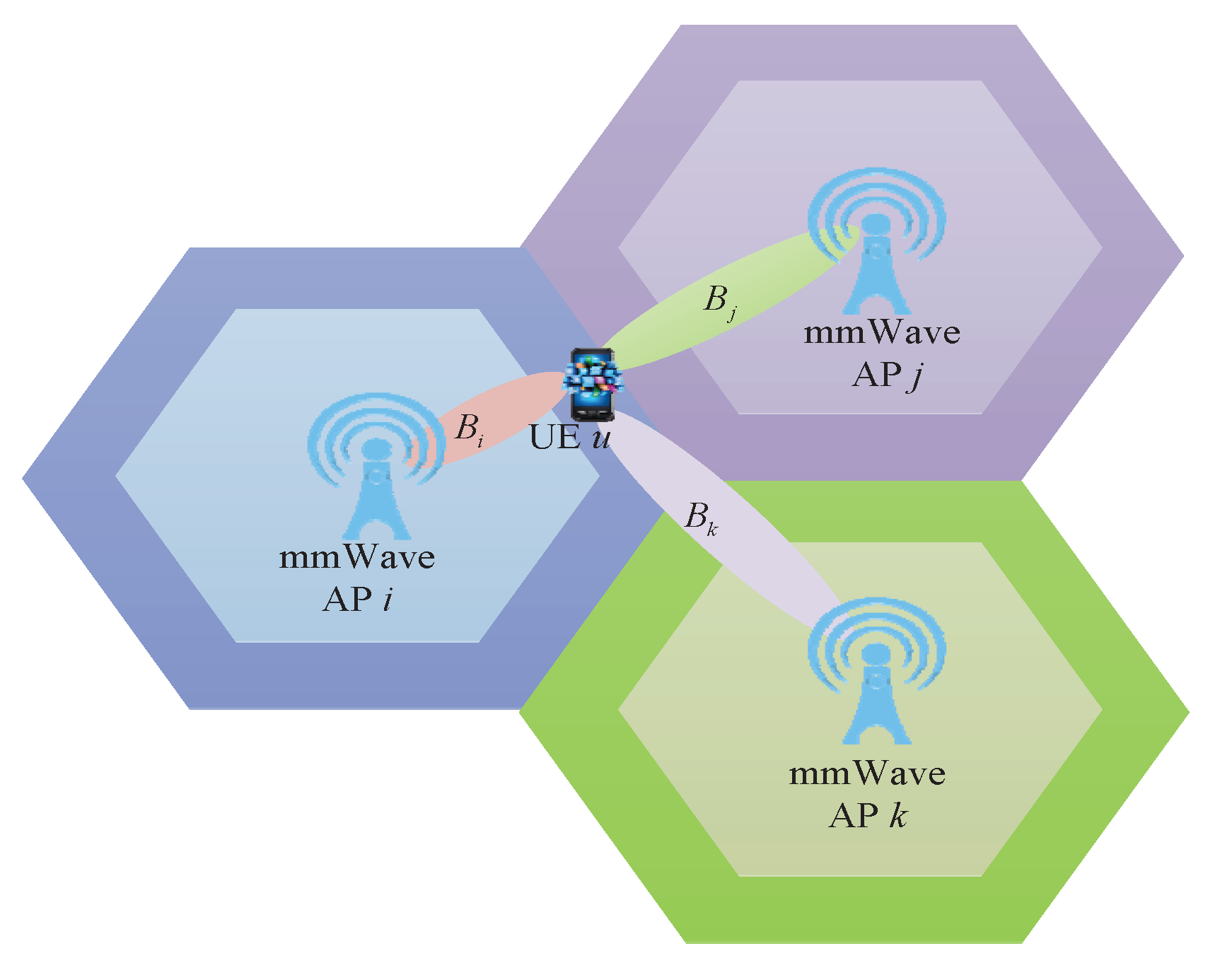
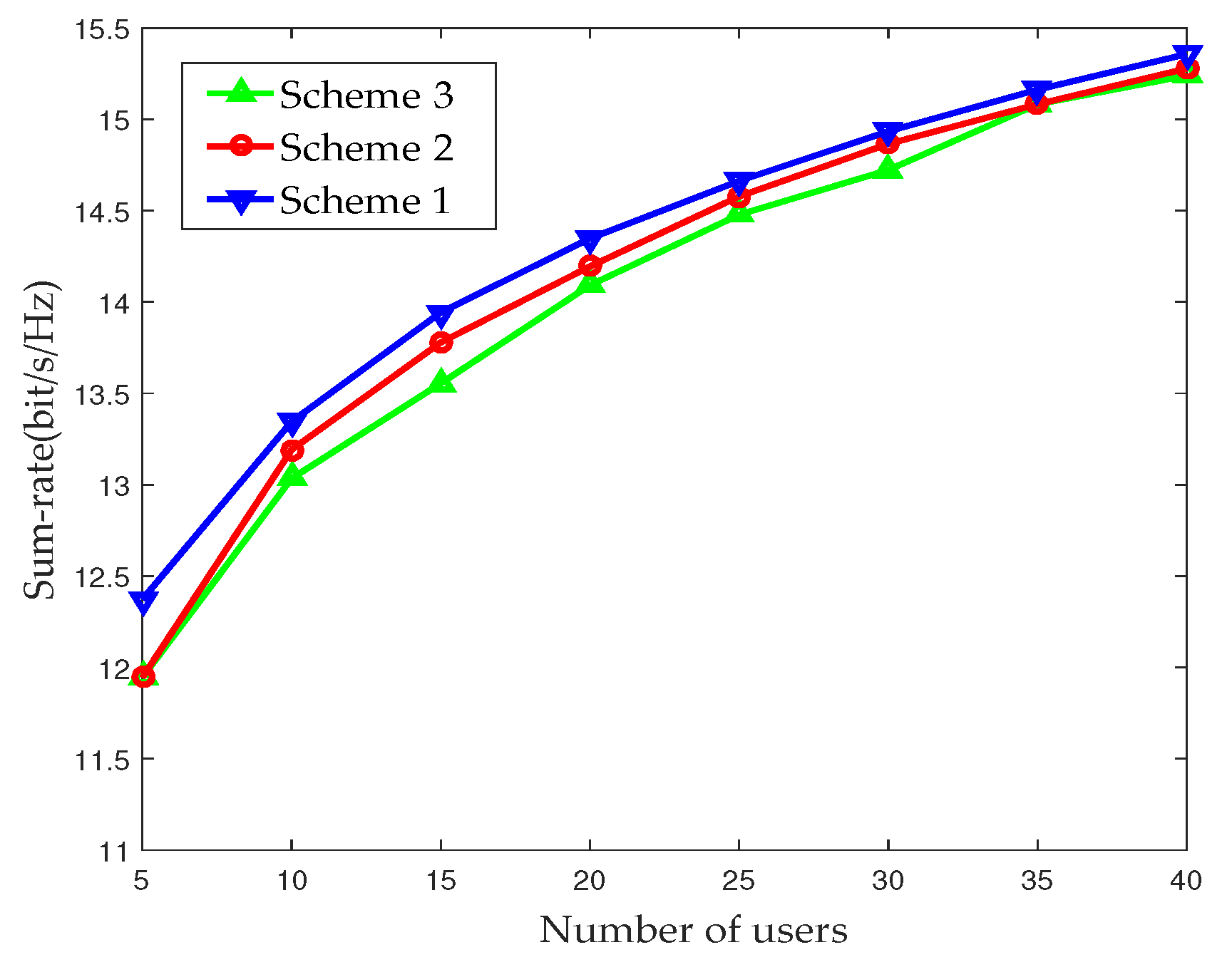
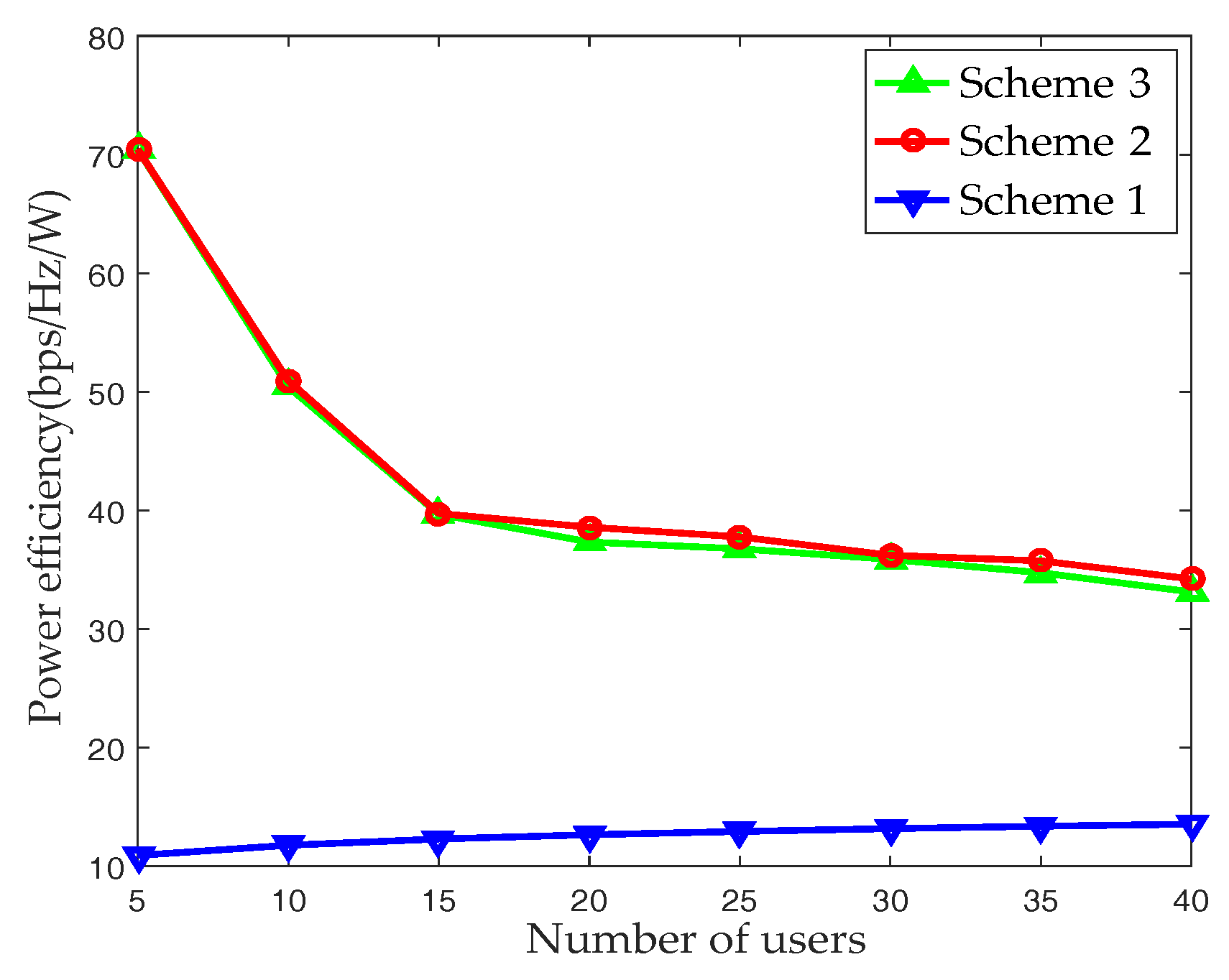
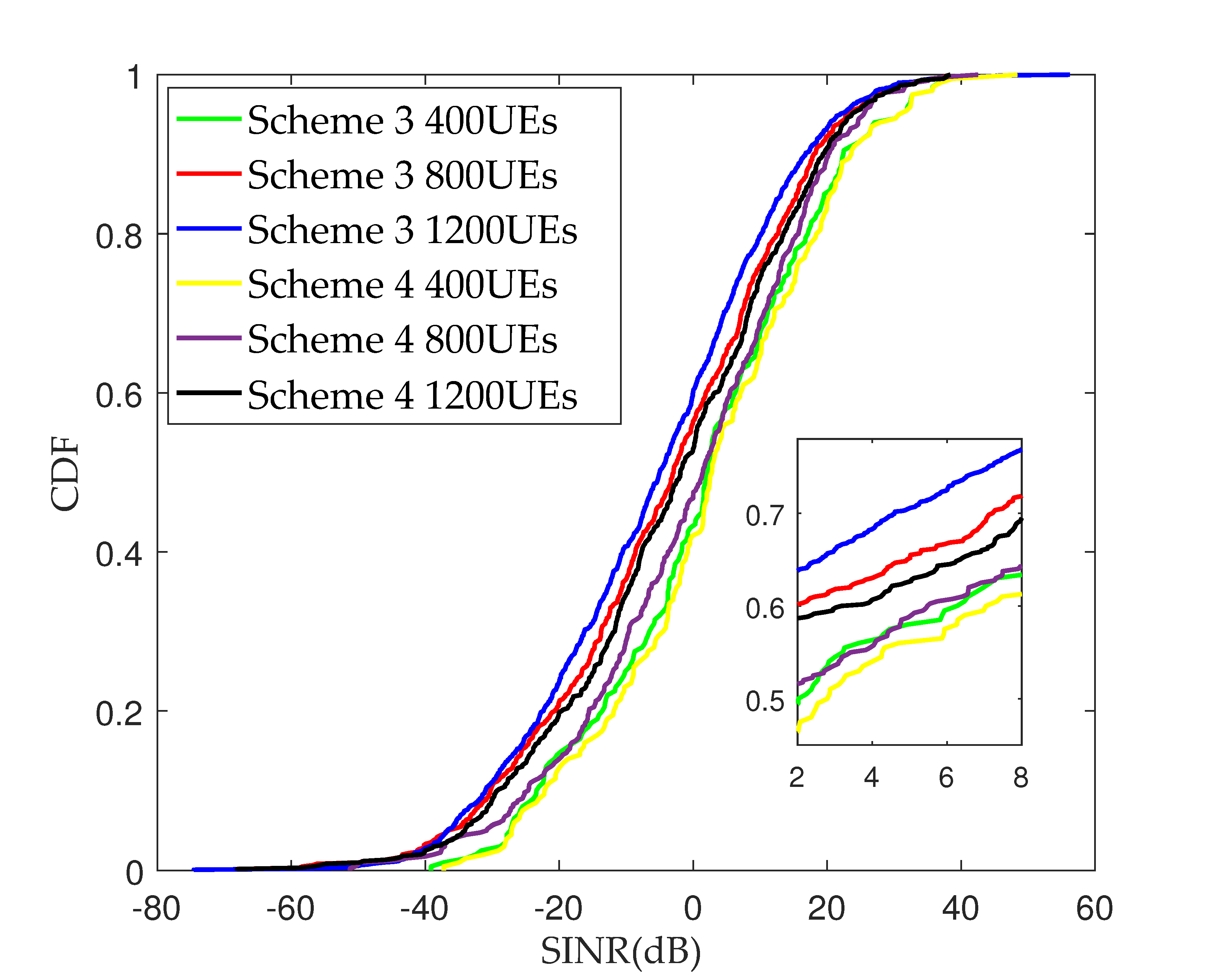
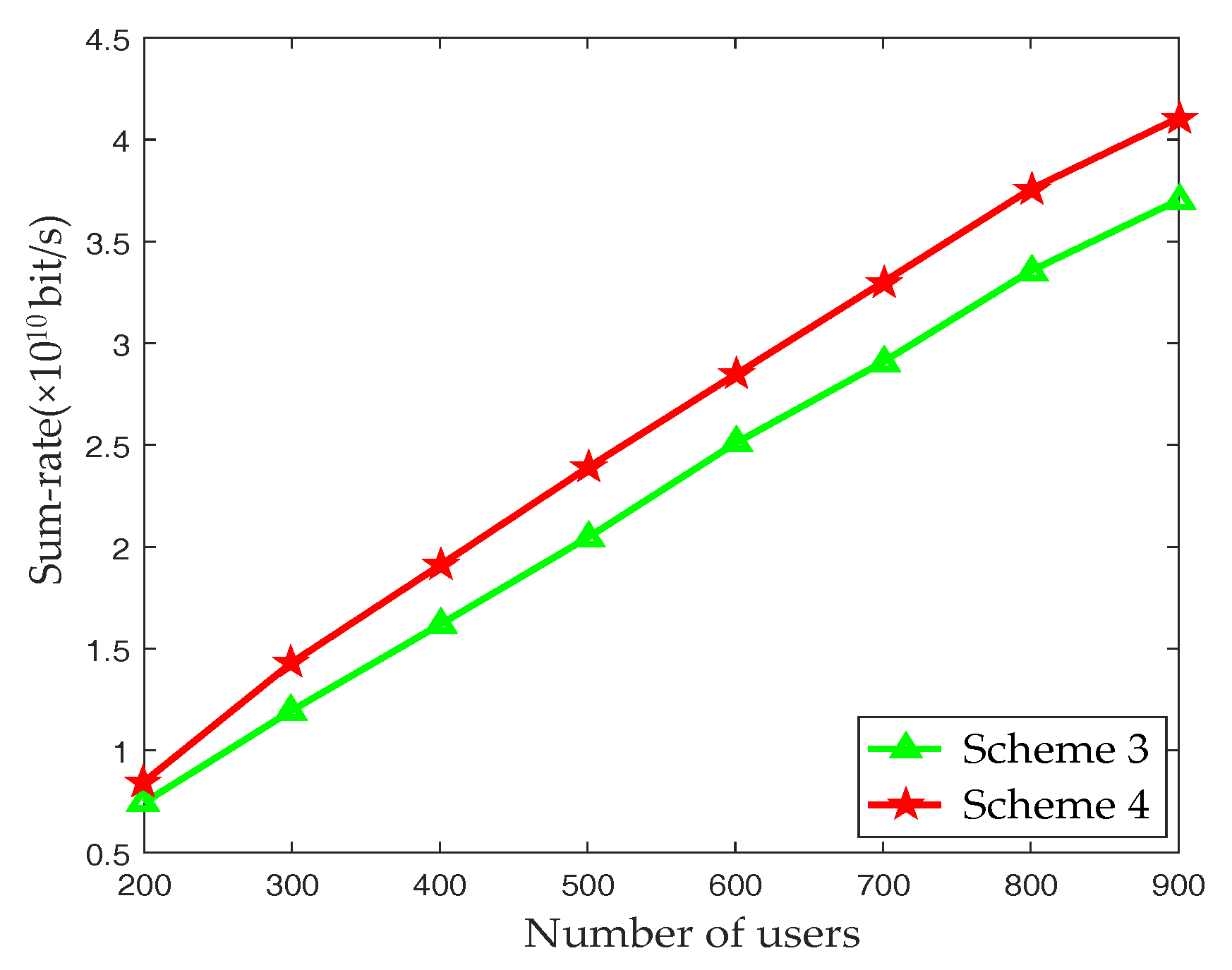
| Parameters | Macrocell | mmWave Small Cell |
|---|---|---|
| Coverage radius | 1500 m | 50 m |
| Transmit power | 46 dBm | 15 dBm |
| Antenna No. | - | 64 |
| RF chains | - | 32 |
| Attenuation value, A | - | , |
| Path loss exponent, n | - | , |
| Frequency band | 2.5 GHz | 60 GHz |
| bandwidth | 20 MHz | 1 GHz |
| Parameters | Value |
|---|---|
| Low frequency detection period | 200 ms |
| PFP length | 3 |
| Fingerprint Matching Period | 1 s |
| Noise density | −204 dBm/Hz |
© 2017 by the authors. Licensee MDPI, Basel, Switzerland. This article is an open access article distributed under the terms and conditions of the Creative Commons Attribution (CC BY) license (http://creativecommons.org/licenses/by/4.0/).
Share and Cite
Zhang, Z.; Chen, Y. Position Fingerprint-Based Beam Selection in Millimeter Wave Heterogeneous Networks. Sensors 2017, 17, 2009. https://doi.org/10.3390/s17092009
Zhang Z, Chen Y. Position Fingerprint-Based Beam Selection in Millimeter Wave Heterogeneous Networks. Sensors. 2017; 17(9):2009. https://doi.org/10.3390/s17092009
Chicago/Turabian StyleZhang, Zufan, and Yanbo Chen. 2017. "Position Fingerprint-Based Beam Selection in Millimeter Wave Heterogeneous Networks" Sensors 17, no. 9: 2009. https://doi.org/10.3390/s17092009





